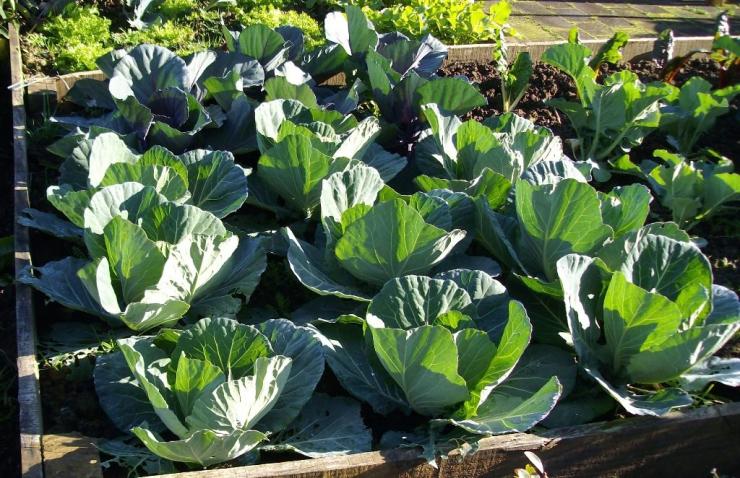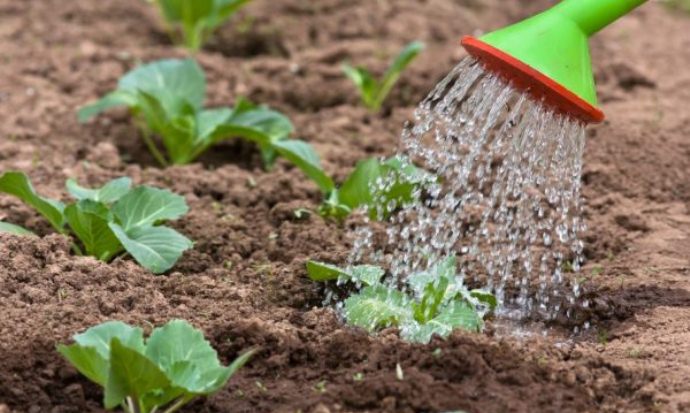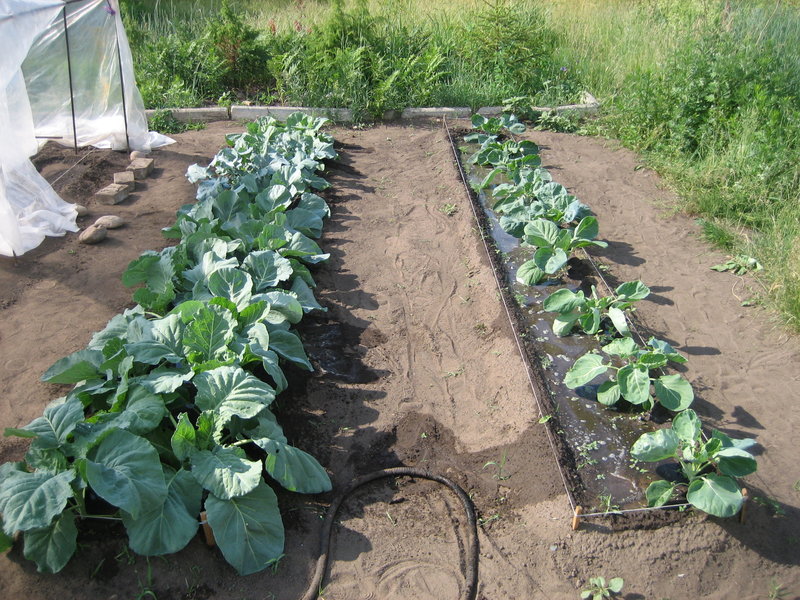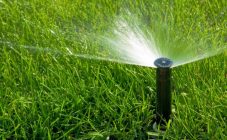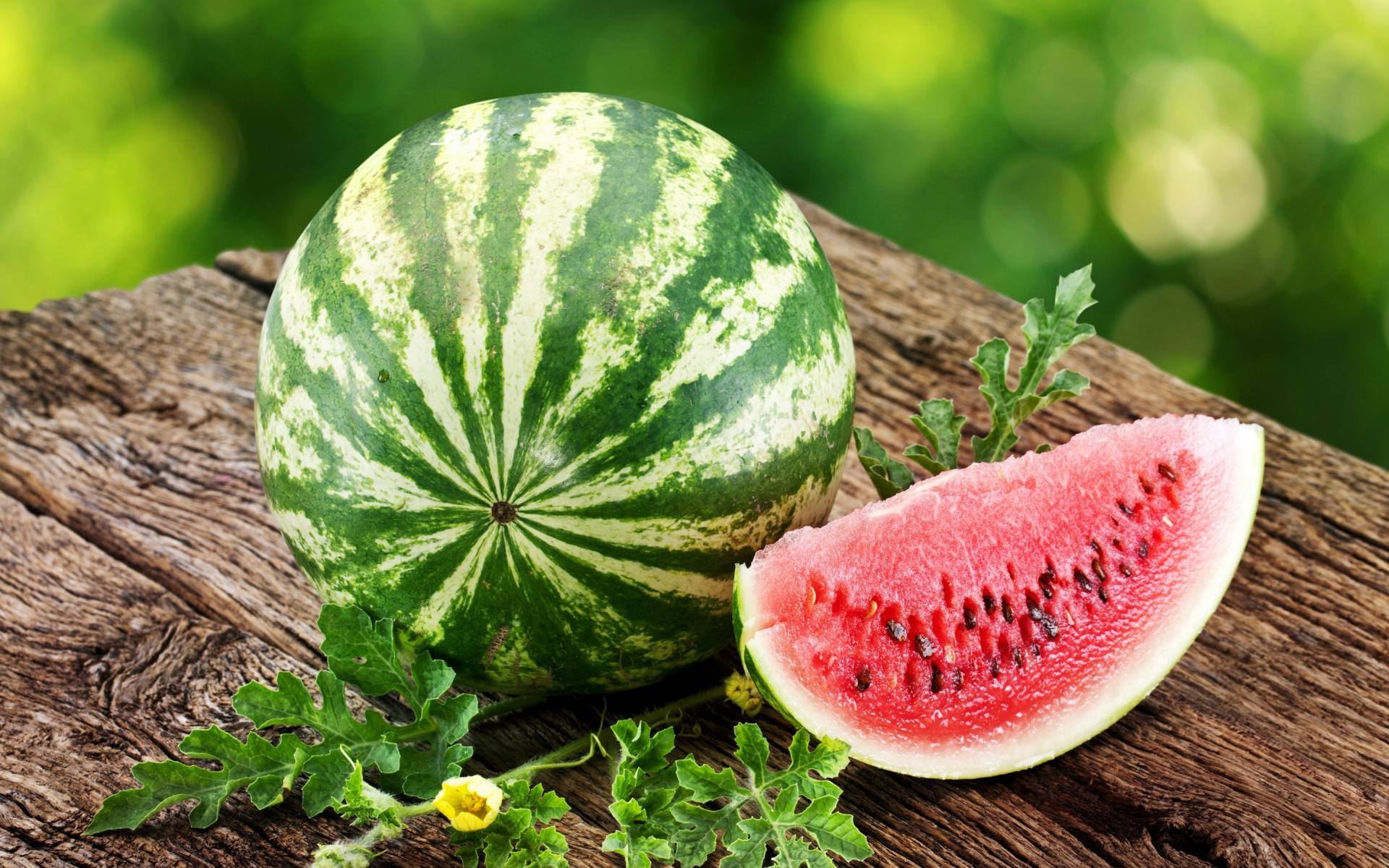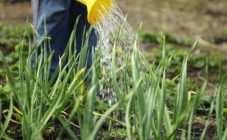Content:
Cabbage is a vitamin vegetable, without which many simply cannot imagine their diet. The product is used for preparing salads, hot dishes, preservation. Despite the fact that there is a culture in every garden, not all summer residents pay due attention to watering. Because of this, the plant grows poorly, often gets sick, and sometimes does not even tie heads of cabbage. How to water cabbage in order to harvest the most generous harvest?
Culture information
Cabbage is a garden plant with large leaves that close together to form a dense head of cabbage. The culture will bear fruit abundantly if water and fertilizing are timely applied. When choosing a species for cultivation, you need to take into account its characteristics, weather conditions.
What varieties are in the greatest demand:
- June is an early ripe variety, the heads of which ripen 60-65 days after transplanting. The maximum weight of dense light green heads of cabbage is 2.5 kg;
- Cossack F1 is an ultra-early variety. Heads of cabbage ripen after 65-70 days after sowing. Fruit weight - 1.5 kg. The species is resistant to fungal diseases and pests;
- Aggressor F1 is a late high-yielding variety. The mass of a round-flat head of cabbage often reaches 4.5 kg;
- Amager 611 is a late variety, the growing season of which lasts 150-160 days. Heads of cabbage are dense, green-white. Weight - 4-5 kg;
- Snow White - the duration of the growing season is 145-160 days. With careful care, heads of cabbage grow up to 4 kg. Due to its dense structure, it can be stored for 6 months;
- Centurion is a hybrid plant. From the moment of planting to harvesting, 100-110 days pass. The weight of a head of cabbage varies from 3 to 3.5 kg. Possesses high immunity to many diseases of the Cruciferous family.
How to water cabbage properly
To bring the liquid to the desired temperature, the day before the manipulation, it is poured into black barrels, which are placed in a well-lit place. In the southern regions, containers are placed in partial shade, since the water overheats under the scorching rays. You cannot use hot water for watering cabbage.
How often to water the cabbage? The interval depends on the climatic conditions of the growing region and the weather conditions of the current year. The higher the average daily temperature, the more moisture the crop needs for normal growth. In rainy times, water is brought under the plants only occasionally or not at all.
How often to water seedlings of different varieties of cabbage? To make it easier for plants to take root, water is added 2-3 times a day. The best time to water is morning and evening. It is impossible to irrigate the plants during the day, as the water will quickly evaporate and will not have time to saturate them. According to this scheme, cabbage of all types is watered for 2 weeks. If a greenhouse is chosen as a permanent residence, the frequency of irrigation is adjusted based on the condition of the soil. To allow excess moisture to evaporate quickly, the room must be opened.
How to water cabbage seedlings correctly? The soil that contains the cassette or seedling box is gently moistened with a small watering can.Watering is carried out as the substrate dries.
The intensity of irrigation directly depends on the growing season. So, the newly planted seedlings and plants that form the head of cabbage need moisture most urgently. As for the time frame, the most abundant watering of late cabbage falls on August-September, and early cabbage - in June.
So that the roots do not suffer from contact with nutrients, the volume of water is increased during each feeding. On all other days of the growing season, the soil should be moderately moist. It is impossible to bring the bed to the state of a swamp or desert. How much water does this culture need? The average indicator for an adult cabbage is 12 liters per 1 sq. m area, 2 times a week.
Soil moistening methods
There are several ways to add water to your garden. Features of each of them:
- On the furrows. Water is brought into the grooves made in the aisles. This method is used only for irrigating mature bushes. The main advantage is optimal moisture for setting and ripening heads of cabbage, the disadvantage is that you can overmoisten the soil;
- Sprinkling. How to water cabbage? Watering is carried out on top of the plants, as a result of which not only the soil and leaves are moistened, but also the air in the garden. This method is considered the most optimal, since it is almost impossible to oversaturate the soil with moisture. In addition, watering can be combined with fertilization and insecticides. But the method also has disadvantages: the soil is unevenly soaked, crust after watering;
- Drip irrigation. The newest, but no less effective than the previous two, method of irrigating garden plants. Its essence lies in the fact that water is supplied directly under the root through an irrigation hose with small holes. Such a system can be used on difficult terrain and in adverse weather conditions. Moreover, much less water is required for watering cabbage than when using other methods. Drip irrigation also has disadvantages: the high cost of equipment and the need to purify water.
Which is the best way? They are all effective, so choosing the best one for your plants follows from your own preferences, physical and financial situation.
Methods for combining watering and feeding
The following are very popular as fertilizers:
- Ammonia. Add 50 ml of the substance to 5 liters of water and water the seedlings under the root. Such feeding saturates the plant with the necessary trace elements and performs the function of an insecticide. Any pest bypasses the "fragrant" garden;
- Iodine. During the formation of leaves and ripening of heads of cabbage, the cabbage is fed with a solution of 5 drops of iodine and 10 liters of water. Processing is carried out after watering or rain. To avoid contact with the concentrate, cabbage is watered in a protective suit;
- Combined mixture. To prepare the solution, add 15 g of carbamide and potassium chloride, 23 g of superphosphate to a standard bucket;
- Superphosphate and wood ash. Stir 3 tablespoons in a bucket of water. phosphate, 1 tbsp. ash.
The Peking cabbage species responds especially well to the combination of water application with the introduction of complex mineral fertilizers.
To harvest a good cabbage crop, you need to take proper care of the plants, one of the main stages of which is watering. Water for a vegetable crop is brought in based on weather conditions and the growing season. It is very important to stick to the golden mean when watering cabbage, so you need to check the condition of the soil before completing the watering plan.
